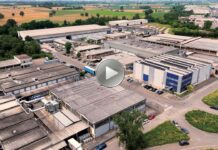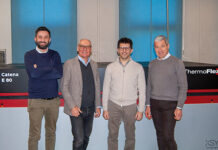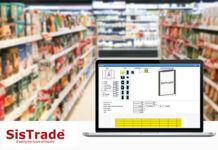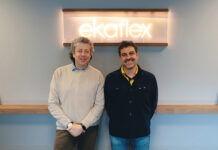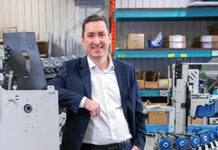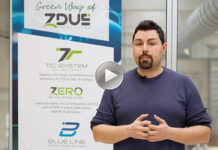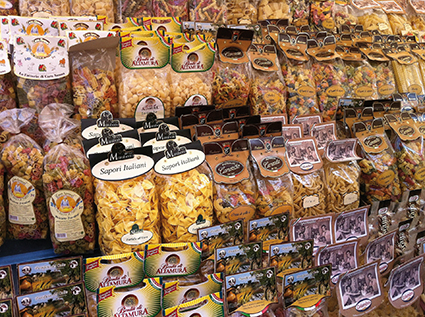 Great success for Giflex flexible packaging webinar: circularity and end of life held on April 27th which attracted over 110 participants among the companies in the sector. At the center of the virtual conference the environmental theme, a priority topic in the world of packaging, with a focus on the analysis and understanding of the paths towards which flexible packaging should be directed at the end of its use. The protagonists of the meeting were the consortia that collect and process flexible packaging: Comieco for paper, Corepla for plastic, Biorepack for biodegradable and compostable materials, to talk about sustainability, circular economy, recycling and design, that is the need to foresee the entire life cycle of the packaging, including disposal at the end of its life, right from the moment of its design). A very important contribution arrived also from the academic world with Prof. Gaetano Guerra who dedicated his speech to chemical recycling for plastic packaging (processes under study and development that could offer important opportunities for the recovery of polymers by increasing processes that are always more and more addressed towards the principles of the circular economy).
Great success for Giflex flexible packaging webinar: circularity and end of life held on April 27th which attracted over 110 participants among the companies in the sector. At the center of the virtual conference the environmental theme, a priority topic in the world of packaging, with a focus on the analysis and understanding of the paths towards which flexible packaging should be directed at the end of its use. The protagonists of the meeting were the consortia that collect and process flexible packaging: Comieco for paper, Corepla for plastic, Biorepack for biodegradable and compostable materials, to talk about sustainability, circular economy, recycling and design, that is the need to foresee the entire life cycle of the packaging, including disposal at the end of its life, right from the moment of its design). A very important contribution arrived also from the academic world with Prof. Gaetano Guerra who dedicated his speech to chemical recycling for plastic packaging (processes under study and development that could offer important opportunities for the recovery of polymers by increasing processes that are always more and more addressed towards the principles of the circular economy).
Paper-based poly laminates: collection, recycling and differentiated CAC
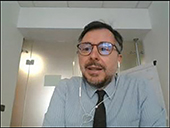
Roberto Di Molfetta, Recycling Manager of Comieco investigated the aspects related to the end of life of laminated flexible packaging with paper base.
The paper sector has adopted a technical standard UNI 11743 certification method of Aticelca recyclability which will increasingly be the reference for the management of the end of life of cellulosic packaging.
Laminated packaging for liquids that are already subject to an extra CAC aimed at dedicated recycling, constitute, due to their particularities, a specific class and are analyzed by the collection and recycling Consortium.
Conai asked Comieco to prepare a proposal for the management of polylaminate packaging with a prevalence of paper aimed at directing them to recycling considering the management costs in relation to their recyclability which will lead to the activation of a specific CAC based on the principle of extended responsibility of the producer. To allow the start of the classification of composite packaging, a strong simplification was adopted for the attribution of the class, only on the percentage of paper present in the packaging, giving companies time to adapt to the criteria established by the UNI Aticelca method.
Aticelca UNI standard simulates the recycling process that can occur during the use of these packaging for the production of a sheet of paper.
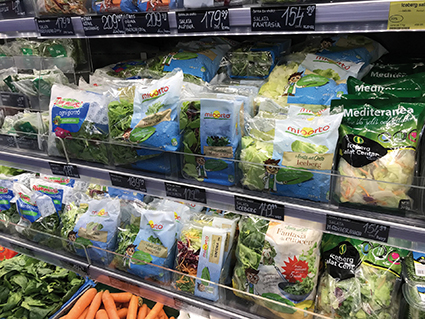 The laboratory defines the level of recyclability divided into 4 classes (A + 90% paper-B 80-90% paper-C 60-80% paper-D -60% paper) beyond which the product is not considered recyclable. The method is applicable only to paper and predominantly paper products, by analyzing the finished packaging with printing, glue, etc. The CAC environmental contribution, a Conai prerogative essential to ensure the recovery and recycling of materials, is being defined and will be calibrated taking into account the subdivision based on the percentage of paper present in the packaging.
The laboratory defines the level of recyclability divided into 4 classes (A + 90% paper-B 80-90% paper-C 60-80% paper-D -60% paper) beyond which the product is not considered recyclable. The method is applicable only to paper and predominantly paper products, by analyzing the finished packaging with printing, glue, etc. The CAC environmental contribution, a Conai prerogative essential to ensure the recovery and recycling of materials, is being defined and will be calibrated taking into account the subdivision based on the percentage of paper present in the packaging.
The final address requires that ABC class packaging can be collected together with the paper, while the D type packaging, containing less than 60% of paper and with not-recyclable results when subjected to the Aticelca method, must be instead addressed to the undifferentiated collection. It will be fundamental the communication to final consumers by printing clear and precise information on the packages. Unfortunately, in the absence of information, the only possible conferment is in the undifferentiated collection. Comieco will activate moments of information for companies but also for consumers.
Chemical and recycling of plastic packaging
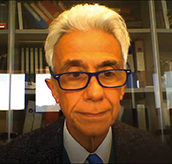
Prof. Gaetano Guerra of the Department of Chemistry and Biology of the University of Salerno, president of the Italian Chemical Society and Italian Member of the EASAC Commission on “Packaging Plastics in the Circular Economy”, spoke about the state of the art of chemical recycling of packaging in plastic. Several technologies have been or are being developed by major chemical companies. The investment levels and energy consumption are such that only large plants should be economically viable. Therefore a key factor is to ensure the supply of sufficient input materials of the right quality.
Chemical recycling is divided into 3 types: depolymerization, pyrolysis and gasification. Depolymerization aims at re-obtaining monomers from preselected polymers. It is essential to have waste based on only one polymer, therefore preselection is essential. Processes at pilot plant level are available for PET and for depolymerization of polystyrene. This is certainly the ideal type of chemical recycling.
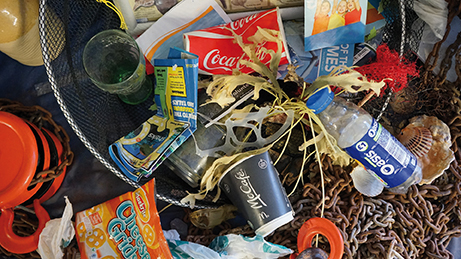 In pyrolysis, thermal decomposition occurs in absence of air whereby solid plastic waste is converted into a wide range of products including monomers, paraffins, olefins and gases. Nestlé is developing an industrial-scale waste plastic-based pyrolysis process with the goal of converting one million tons of plastic waste by 2030. Gasification is thermal decomposition in presence of oxygen.
In pyrolysis, thermal decomposition occurs in absence of air whereby solid plastic waste is converted into a wide range of products including monomers, paraffins, olefins and gases. Nestlé is developing an industrial-scale waste plastic-based pyrolysis process with the goal of converting one million tons of plastic waste by 2030. Gasification is thermal decomposition in presence of oxygen.
The invitation to companies is to change their approach and reach circularity through design aimed at closed-loop recycling (design for recycling), simplification and renunciation of oversized performance compared to actual applications, focusing on depolymerization, but perhaps above all on re-gradation, a economically more sustainable process, which aims to increase rather than reduce the molecular mass of end-of-life polymers.
Biorepack: new EPR scheme for bioplastic packaging supply chain
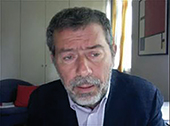
Dr. Gino Schiona, general manager of Biorepack, presented the latest consortium entered in CONAI family, that is the consortium dedicated to recycling of biodegradable and compostable materials, born last November, which already has 160 member companies and is the first EPR (Extended Producer Responsibility) organization dedicated to bioplastics in Europe. The amount introduced on the national market in 2019 was estimated at 72,000 tons, of which 95% consists of shopping bags and bags for biodegradable bulk food.
Biorepack rationalizes, organizes, guarantees, promotes and encourages collection/recycling of bioplastic packaging waste conferred to the public service with particular reference to the separate collection of the organic fraction of urban waste following CONAI recommendation.
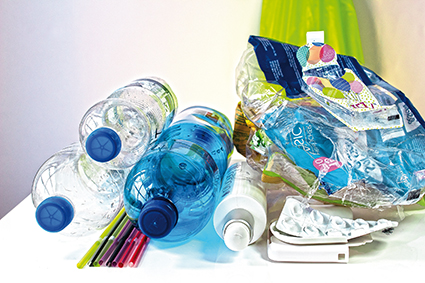 Bioplastic packaging means packaging produced with polymeric raw materials, whether they originate from renewable sources or have fossil origin, which have the characteristic of being biodegradable and compostable. Bioplastic packaging, at the end of its life, must guarantee certified organic recyclability in different environments (for example composting, anaerobic digestion, soil). The introduction and use of bags (not packaging) for the separate collection of household organic waste, has contributed significantly to the achievement of the collection objectives by the municipalities. Bioplastic packaging, such as shopping bags and fruit and vegetable bags, must be reused after multiple uses to contain domestic organic waste. In this regard, according to an estimate made by the Italian Composting Consortium, about 57 thousand tons of bioplastic material enter the treatment plants. The Consortium is young compared to the others already operating in the other sectors, and the system of territorial relations will be fundamental for the future growth of the Consortium itself and therefore for an improvement in results.
Bioplastic packaging means packaging produced with polymeric raw materials, whether they originate from renewable sources or have fossil origin, which have the characteristic of being biodegradable and compostable. Bioplastic packaging, at the end of its life, must guarantee certified organic recyclability in different environments (for example composting, anaerobic digestion, soil). The introduction and use of bags (not packaging) for the separate collection of household organic waste, has contributed significantly to the achievement of the collection objectives by the municipalities. Bioplastic packaging, such as shopping bags and fruit and vegetable bags, must be reused after multiple uses to contain domestic organic waste. In this regard, according to an estimate made by the Italian Composting Consortium, about 57 thousand tons of bioplastic material enter the treatment plants. The Consortium is young compared to the others already operating in the other sectors, and the system of territorial relations will be fundamental for the future growth of the Consortium itself and therefore for an improvement in results.
Plastic packaging between present and future
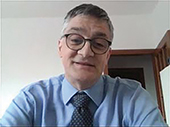
Dr. Luca Stramare, Head of special projects and relations with associations at Corepla, closed the round of speeches.
The consumer often has a negative perception of packaging, not recognizing its advantages and noticing only the packaging when it becomes waste. Therefore, the perception is that there is a world full of packaging when in reality they represent only 8% of waste.
The pandemic has led to new buying and consumption habits, a request for greater security, home catering, online purchases, all actions that have been successful thanks to packaging, so much so that in the last year the share destined for consumption has increased.
In 2019 the consortium handled 1,378,000 tons of plastic packaging (+ 13% compared to 2018) reaching an average collection of 22.8 kg per inhabitant nationwide. The future that is emerging is to reach new goals: all plastic packaging will have to be reusable and recyclable on an industrial scale at competitive costs by 2030 and recycling targets will be raised (50% by 2025, 55% by 2030). Key steps in this process will be the reduction of the volume of packaging waste, the greater use of recycled plastic accompanied by stricter legislation for food contact, the search for greater harmonization at European level and an increase in the burdens and responsibilities for EPR systems: all actions consistent with the path outlined by the Circular Plastic Alliance (an industry initiative under the supervision of the European Commission supported by associations, companies, NGOs, institutions and governments).
The selection made by Corepla is able to separate in detail PET bottles and HPDE bottles, films, mixed polyolefins and other polymers precisely because the Consortium recognizes the importance of dividing the different streams of materials, having by its very nature a strong orientation towards market and therefore acknowledging the requests of recyclers to be able to count on a selected and therefore quality material.
The final stream of not-recyclable material is sent for energy recovery to cement plants, steel mills or landfills when all other options have been pursued.
“The future holds a series of events that are not so peaceful for the plastics industry. There are different regulations for the sector and packaging and they are all strategies that talk about plastic and packaging and translate into significant and also rightly stringent legislative activities that require that industry thinks about seriously”, concludes Stramare.
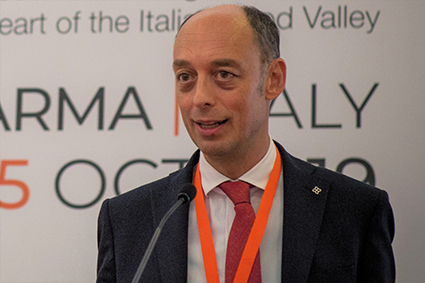
The event was closed by Dr. Alberto Palaveri, president of Giflex and CEO of Sacchital, recalling the great challenges facing the sector to move to a design that aims at circularity and inviting institutions to pay due attention to the transition of production models. “We need to invest in training, human resources and technologies and it is really important that the legislator and the consortia are able to give us the right objectives clearly and well in advance. We appreciate Comieco’s commitment in wanting to better manage the new types of flexible paper-based packaging, even though we would have preferred that all materials with a majority of paper were collected with paper. However, this will stimulate all of us towards a paper-based packaging design with the maximum amount of paper possible. To achieve this goal, it is necessary to train and invest in companies”, comments Dr. Palaveri and adds: “we, as Giflex, are working with institutions to have as much clarity as possible, and I invite the managers of these processes to do their part so that no bureaucracy is created, but incentives and concrete help are created for companies so that they can go out on the market quickly and with products capable of responding to new needs. Time-to-market and the competitiveness of companies is an issue that should not be underestimated”, concludes Giflex president.





